Jannicke Pearkes
Long Short-Term Memory networks with jet constituents for boosted top tagging at the LHC
Nov 24, 2017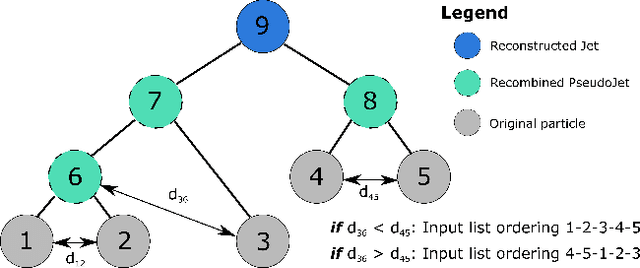
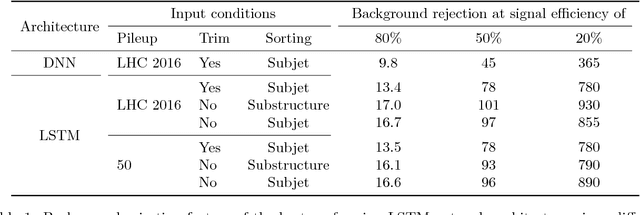
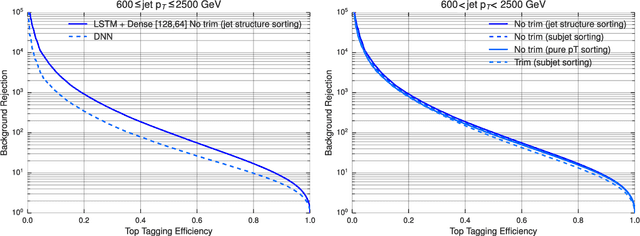
Abstract:Multivariate techniques based on engineered features have found wide adoption in the identification of jets resulting from hadronic top decays at the Large Hadron Collider (LHC). Recent Deep Learning developments in this area include the treatment of the calorimeter activation as an image or supplying a list of jet constituent momenta to a fully connected network. This latter approach lends itself well to the use of Recurrent Neural Networks. In this work the applicability of architectures incorporating Long Short-Term Memory (LSTM) networks is explored. Several network architectures, methods of ordering of jet constituents, and input pre-processing are studied. The best performing LSTM network achieves a background rejection of 100 for 50% signal efficiency. This represents more than a factor of two improvement over a fully connected Deep Neural Network (DNN) trained on similar types of inputs.
Jet Constituents for Deep Neural Network Based Top Quark Tagging
Aug 09, 2017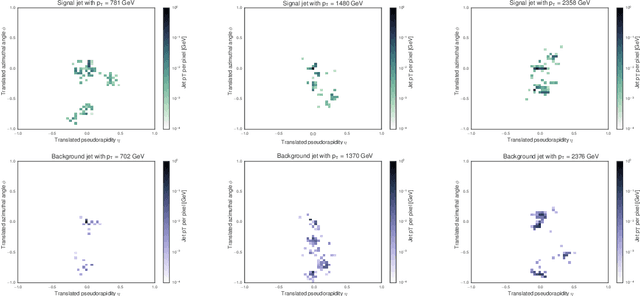

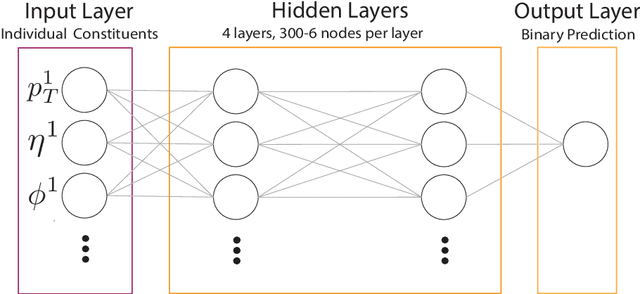
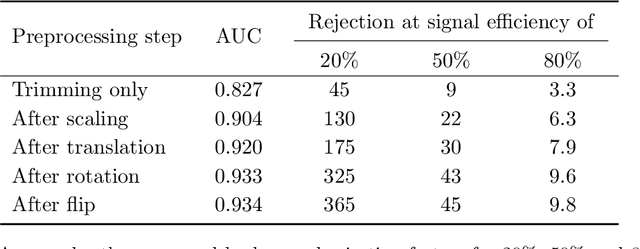
Abstract:Recent literature on deep neural networks for tagging of highly energetic jets resulting from top quark decays has focused on image based techniques or multivariate approaches using high-level jet substructure variables. Here, a sequential approach to this task is taken by using an ordered sequence of jet constituents as training inputs. Unlike the majority of previous approaches, this strategy does not result in a loss of information during pixelisation or the calculation of high level features. The jet classification method achieves a background rejection of 45 at a 50% efficiency operating point for reconstruction level jets with transverse momentum range of 600 to 2500 GeV and is insensitive to multiple proton-proton interactions at the levels expected throughout Run 2 of the LHC.
 Add to Chrome
Add to Chrome Add to Firefox
Add to Firefox Add to Edge
Add to Edge